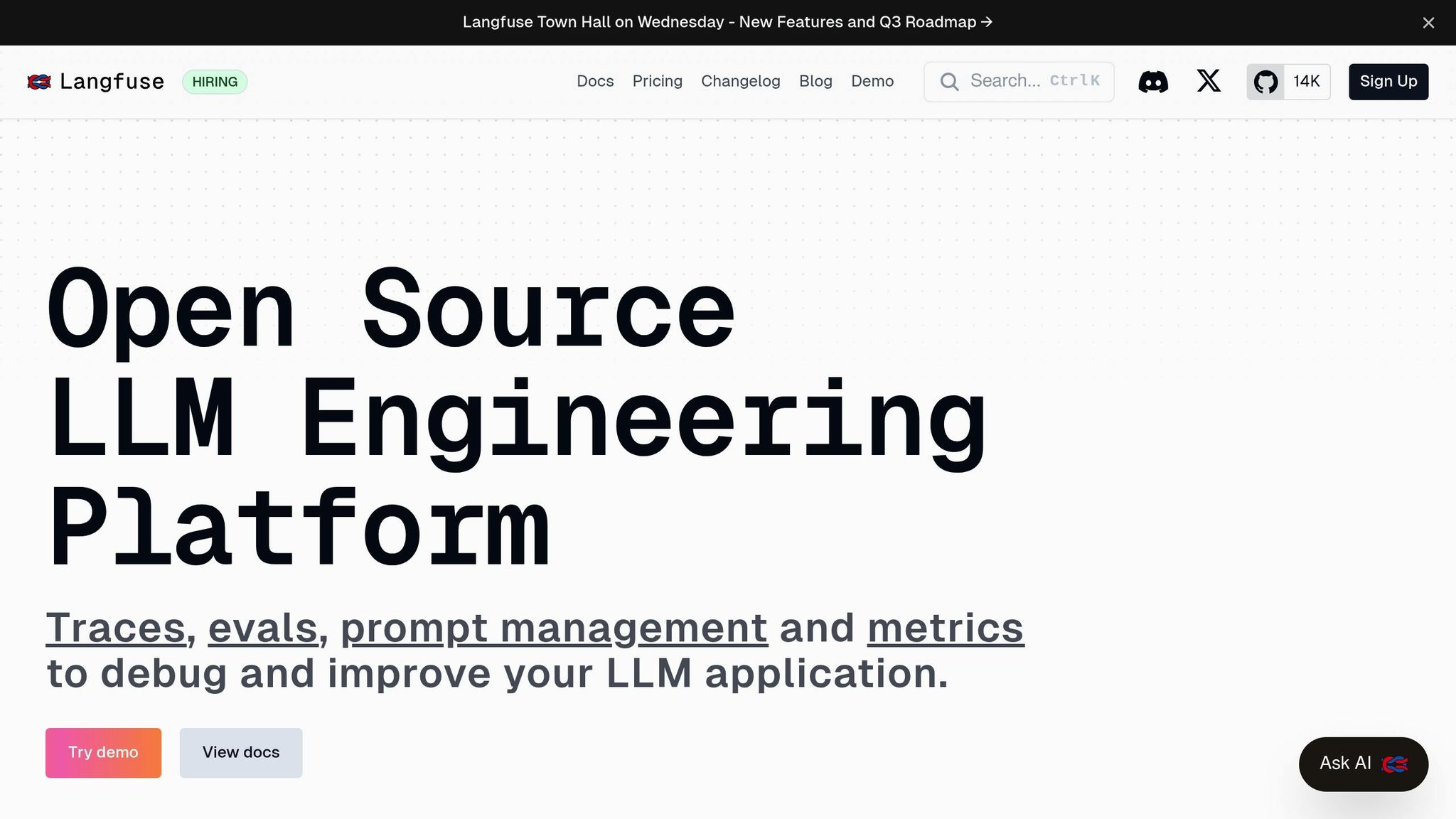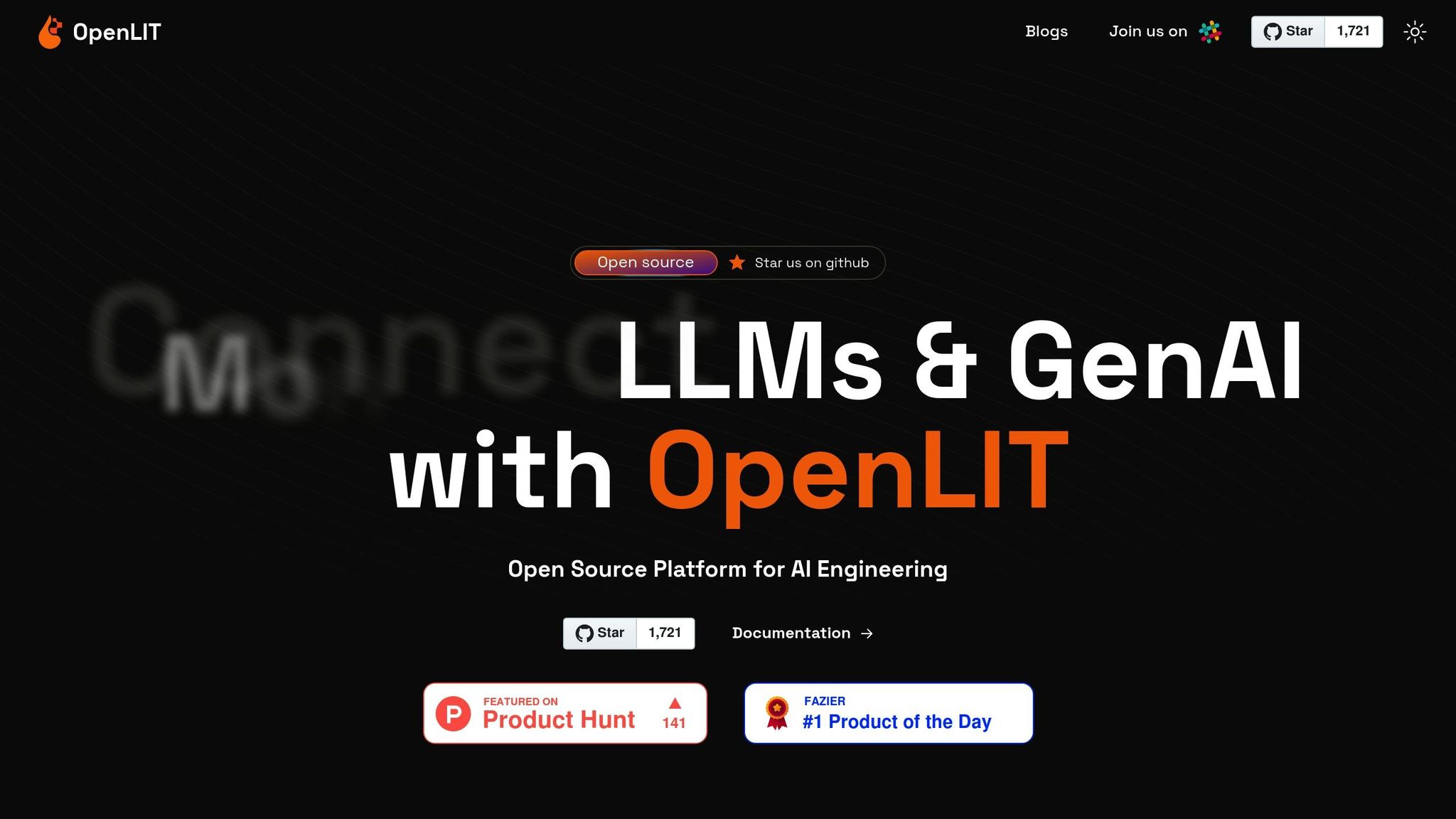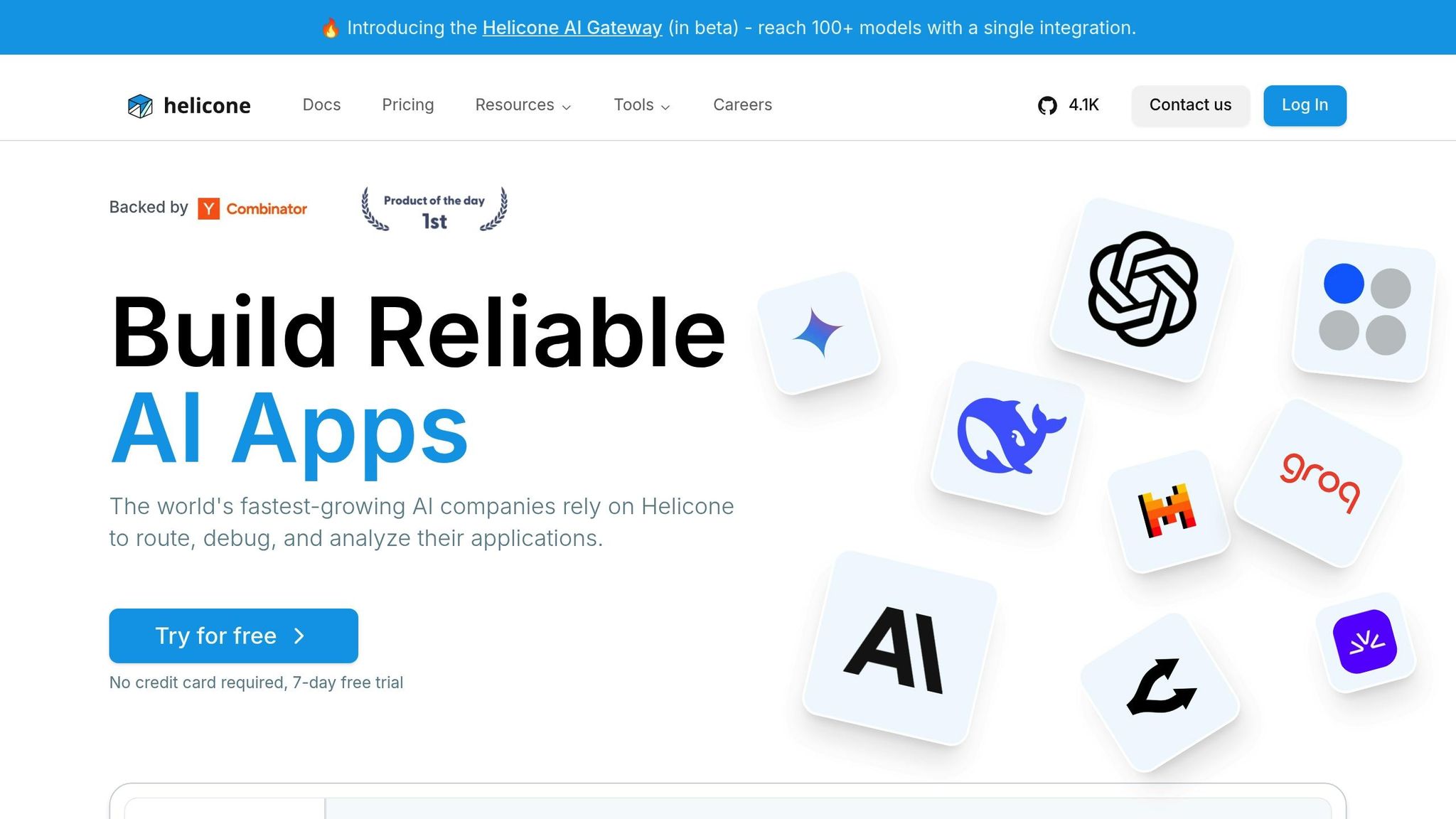
Managing costs for large language models (LLMs) is critical as AI adoption grows. Open-source tools offer a way to reduce expenses while maintaining control over infrastructure and usage. Here's a quick rundown of what you need to know:
Understanding the factors behind LLM (Large Language Model) costs is crucial for managing expenses effectively. These costs can range from just a few cents to over $20,000 per month per instance in cloud environments. Several elements shape the overall cost structure, including model complexity, input and output sizes, media types, latency needs, and tokenization methods. Generally, more advanced models come with higher costs, so finding the right balance between performance and budget is essential. Knowing these cost drivers helps set the stage for smarter strategies to control expenses.
The compute infrastructure is the backbone of any LLM deployment and often the largest expense. For instance, hosting Llama3 on AWS with the recommended ml.p4d.24xlarge instance costs nearly $38 per hour, adding up to at least $27,360 per month. Choosing the right cloud provider and pricing model can significantly impact these costs. Options like on-demand, spot, and reserved instances offer varying savings. Spot instances, for example, can reduce costs by up to 90% compared to on-demand rates, while reserved instances can save up to 75% for consistent workloads. To illustrate, an AWS p3.2xlarge instance costs $3.06 per hour on-demand but drops to $0.92 per hour as a spot instance.
Without careful optimization, these expenses can spiral out of control. By fine-tuning infrastructure choices, organizations can maximize the value of their AI investments while scaling operations efficiently. A notable example is Hugging Face's 2024 partnership with Cast AI, which uses Kubernetes clusters to optimize LLM deployments, cutting cloud costs while improving performance and reliability.
Beyond hardware, the way models process data also plays a big role in shaping costs.
Tokenization is a key part of how LLMs operate - and it directly impacts costs. As Eduardo Alvarez puts it:
"LLMs aren't just generating text - they're generating economic output, one token at a time".
Tokenization breaks text into smaller pieces - like word fragments, full words, or punctuation - that the model can process. Roughly 750 words equal 1,000 tokens. Longer prompts or higher token counts in requests mean higher costs and slower API response times.
Pricing for premium services like GPT-4 is typically around $0.03–$0.06 per 1,000 tokens. For example, GPT-4 charges $0.03 per 1,000 input tokens and $0.06 per 1,000 output tokens. In contrast, GPT-3.5 Turbo offers much lower rates at $0.0015 per 1,000 input tokens and $0.002 per 1,000 output tokens. To put this into perspective, processing a single query with GPT-4o costs $0.1082, while GPT-4o-mini costs $0.0136. If 50 daily active users make 20 queries each, the monthly cost would be about $3,246.00 for GPT-4o compared to $408.00 for GPT-4o-mini.
Managing tokens effectively - such as condensing prompts, monitoring usage, and breaking large inputs into smaller chunks - can help reduce these costs.
After compute and token costs, API calls and data storage are other important budget considerations. API requests, especially those happening in the background, can quickly add up. Costs stem from factors like input/output sizes, application prompts, and the use of vector databases.
For organizations handling high request volumes, these costs can escalate rapidly. For example, a sentiment analysis task using GPT-4-Turbo - processing 30 requests per minute with an average input of 150 tokens and output of 45 tokens - can cost approximately $3,693.60 per month. The same workload on Llama3-8b, running on an AWS g5.2xLarge instance, would cost about $872.40 per month for one instance or $1,744.80 for two instances.
Data storage costs also grow when managing large datasets, conversation histories, or vector databases used in retrieval-augmented generation (RAG) applications.
Optimizing API usage can lead to significant savings. For example, batch processing API calls can cut costs by up to 50% for tasks that can wait up to 24 hours. This approach works well for non-urgent operations like data analysis or content generation. Ultimately, managing LLM costs involves balancing speed, accuracy, and expenses. Organizations need to assess their specific needs to find the best mix of models, infrastructure, and usage patterns.
Keeping LLM costs under control is crucial, and open-source tools are a great way to track and manage these expenses effectively. These tools give you clear insights into spending while helping you find ways to optimize usage. Below, we explore three standout options that integrate smoothly into development workflows and offer powerful features for managing LLM costs.

Langfuse is a robust solution for tracing and logging LLM applications, making it easier for teams to understand and debug workflows while keeping an eye on expenses. It tracks detailed usage metrics - like the number of units consumed per usage type - and provides cost breakdowns in USD. By integrating with popular frameworks like Langchain, Llama Index, and the OpenAI SDK, Langfuse monitors both LLM-related and non-LLM actions.
For cost-conscious teams, Langfuse offers practical features such as sampling fewer traces or logging only essential data to minimize overhead. The platform is available in various plans, including a free Hobby plan with limited features, paid options, and a self-hosted open-source version.

OpenLIT fills a critical gap in traditional monitoring by focusing on AI-specific performance metrics. While OpenTelemetry is useful for general application data, it doesn't track AI-focused details - this is where OpenLIT steps in. Supporting over 50 LLM providers, vector databases, agent frameworks, and GPUs, OpenLIT offers extensive integration options.
The platform includes an SDK that automatically instruments events and collects spans, metrics, and logs, whether you're using OpenAI, Anthropic, Cohere, or a fine-tuned local model. It also allows you to define custom pricing for proprietary or fine-tuned models, ensuring accurate cost tracking. Additionally, OpenLIT gathers metadata from LLM inputs and outputs and monitors GPU performance to help identify inefficiencies. Its compatibility with OpenTelemetry ensures seamless integration into existing monitoring setups.

Helicone takes a different approach by acting as a proxy between your application and LLM providers. This setup allows it to log requests and offer features like caching, rate limiting, and enhanced security - all without requiring significant code changes.
One of Helicone's standout features is its caching capability, which can reduce costs by 15–30% for most applications. Implementing this feature is straightforward and requires minimal adjustments. Here's an example:
openai.api_base = "https://oai.helicone.ai/v1"
client.chat.completions.create(
model="text-davinci-003",
prompt="Say this is a test",
extra_headers={
"Helicone-Auth": f"Bearer {HELICONE_API_KEY}",
"Helicone-Cache-Enabled": "true", # mandatory, enable caching
"Cache-Control": "max-age = 2592000", # optional, cache for 30 days
"Helicone-Cache-Bucket-Max-Size": "3", # optional, store up to 3 variations
"Helicone-Cache-Seed": "1", # optional deterministic seed
})
Nishant Shukla, Senior Director of AI at QA Wolf, praised its simplicity and effectiveness:
"Probably the most impactful one-line change I've seen applied to our codebase."
When used alongside prompt optimization strategies, Helicone's caching can slash LLM costs by 30–50%, with the potential for even greater savings in some cases - up to 90%.
Each of these tools brings unique strengths to the table. Langfuse shines with its detailed tracing and prompt management capabilities. OpenLIT stands out for its deep integration and AI-centric monitoring features, while Helicone offers quick wins with its caching and proxy-based cost-saving approach. The best choice depends on your specific needs, infrastructure, and priorities.
Scaling LLM infrastructure without overspending requires finding the right balance between performance, monitoring, resource efficiency, and strong cost management.
Keeping an eye on token usage is one of the most effective ways to manage LLM costs. Since many LLM providers charge based on tokens - usually per 1,000 tokens - cutting down on unnecessary tokens can lead to significant savings.
One effective method is prompt engineering, which can reduce token usage by up to 85%. For instance, instead of writing, "Please write an outline for a blog post on climate change covering causes, effects, and solutions in an engaging format", you could simplify it to, "Create an engaging climate change blog post outline with causes, effects, and solutions". This minor adjustment reduces token usage while keeping the message clear.
Context management is another way to save on tokens. By including only essential details and removing repetitive or irrelevant information, teams can cut token usage by as much as 97.5%. Similarly, controlling response length by setting token limits and encouraging concise outputs can reduce usage by 94%.
Choosing the right model for the task at hand also plays a big role in cost management. Using smaller, task-specific models for simpler tasks while reserving more powerful models for complex operations creates a tiered system that balances cost and performance:
| Task Complexity | Recommended Model Tier | Cost Efficiency | Sample Use Cases |
|---|---|---|---|
| Simple text completion | GPT-4o Mini / Mistral Large 2 | High | Classification, sentiment analysis |
| Standard reasoning | Claude 3.7 Sonnet / Llama 3.1 | Medium | Content generation, summarization |
| Complex analysis | GPT-4.5 / Gemini 2.5 Pro Experimental | Low | Multi-step reasoning, creative tasks |
Beyond token optimization, efficient workload distribution and caching can further reduce costs.
Load balancing ensures that requests are evenly distributed among multiple LLMs, avoiding bottlenecks and improving response times. Caching, on the other hand, stores frequently accessed data for faster retrieval.
There are different routing strategies to improve efficiency:
A more advanced method is semantic caching, which stores query results based on meaning and context rather than exact matches. This allows for the reuse of results for semantically similar queries, saving up to 67% in tokens.
Major cloud providers have integrated caching into their platforms to help users save costs. For example:
| Provider | Min. Tokens | Lifetime | Cost Reduction | Best Use Case |
|---|---|---|---|---|
| Gemini | 32,768 | 1 hour | ~75% | Large, consistent workloads |
| Claude | 1,024/2,048 | 5 min (refresh) | ~90% for reads | Frequent reuse of prompts |
| OpenAI | 1,024 | 5–60 min | ~50% | General-purpose applications |
By combining token savings with smart routing and caching, organizations can further tighten their cost management through strategic governance.
Effectively managing LLM costs requires a structured approach that delivers value across the organization.
One way to centralize cost management is by adopting an LLM Mesh architecture, which standardizes cost tracking, enforces policies, and enables testing of optimization strategies across all projects. Additionally, monitoring and observability tools like Weights & Biases' WandBot, Honeycomb, and Paradigm can track usage, latency, and spending to identify inefficiencies and improve decision-making.
Cost allocation solutions provide detailed expense breakdowns by team or application, which is particularly useful in environments with multiple models. A FinOps approach - focused on financial operations - can help refine spending by regularly evaluating model performance, optimizing prompts, and leveraging caching strategies.
For example, a 2025 study by Dataiku found that deploying a self-managed, company-wide knowledge assistant for constant, global traffic reduced costs by up to 78% compared to pay-per-token services. This was largely due to the predictable, high-volume nature of the workload.
Incorporating open-source cost management tools into your Large Language Model (LLM) workflows can be done smoothly without disrupting operations. By combining cost control strategies with observability, you can create a proactive, data-driven approach to managing expenses.
To instrument your LLM workflow, you can either manually install the appropriate OpenTelemetry SDK for your programming language and add trace collection code or automate the process using OpenLIT. For OpenLIT, follow these steps:
pip install openlitOTEL_EXPORTER_OTLP_ENDPOINT and OTEL_EXPORTER_OTLP_HEADERSimport openlit; openlit.init()You can further customize the setup by defining parameters like the application name and environment. Back in July 2024, Grafana highlighted how OpenLIT could visualize time-series data through Grafana dashboards, offering improved insights into system performance and cost tracking.
When setting up your workflows, ensure you capture structured logs that include critical elements such as prompts, responses, errors, and metadata (e.g., API endpoints and latency).
Once your workflows are instrumented, real-time collaboration and reporting become essential for keeping an eye on LLM-related costs. Open-source tools excel here, providing shared dashboards with real-time metrics and automated alerts. These features help teams quickly address unexpected spending spikes or performance issues before they escalate.
Tailor your observability strategy to align with your LLM architecture and use case. For instance:
For successful integration, choose open-source tools that work seamlessly with your current LLM infrastructure. Look for solutions that offer strong integration capabilities with major LLM providers, orchestration frameworks, vector databases, and cloud services. Tools with user-friendly dashboards, detailed documentation, and active community support can significantly reduce onboarding time.
Platforms like prompts.ai illustrate how effective LLM management can look in practice. Their AI-driven tools support tasks such as natural language processing, creative content generation, and workflow automation. Additionally, they enable real-time collaboration, automated reporting, and multi-modal AI workflows - all while tracking tokenization costs on a pay-as-you-go basis.
Keeping track of usage and making regular adjustments is crucial to avoid unexpected cost spikes as your usage patterns evolve. By setting up structured processes, you can identify potential issues early and make necessary improvements.
Automated dashboards are a game-changer when it comes to monitoring your spending and usage trends in real time. Focus on tracking key metrics that directly affect costs, such as token usage, cost per request, request frequency by endpoint, and cache hit rates. These metrics provide a clear picture of how your resources are being consumed and where inefficiencies might exist.
To stay ahead of problems, set up alerts for spending surges or performance dips based on historical data. This proactive approach helps you catch small issues before they turn into costly headaches. According to research, organizations that implement prompt optimization and caching strategies can often achieve cost savings of 30–50%.
Your dashboard should also break down expenses by model, endpoint, and user group. This level of detail makes it easier to pinpoint high-cost areas and focus your optimization efforts where they’ll make the biggest difference.
While real-time monitoring is essential, regular cost reviews allow for deeper analysis and long-term improvements. Make it a habit to review your LLM costs monthly or quarterly. During these reviews, analyze your usage patterns to identify areas where costs are higher than expected. From there, you can take targeted steps like fine-tuning models, refining prompts, or switching to more cost-effective models as your application grows.
Set benchmarks to define what "reasonable" costs look like for different operations. For example, here’s a quick reference for common LLM tasks:
| Operation Type | Target Cost Range | Optimization Priority | Recommended Strategies |
|---|---|---|---|
| Content generation | $0.02–$0.05 per request | Medium | Optimize prompts |
| Classification tasks | $0.005–$0.01 per request | Low | Use fine-tuned smaller models |
| Complex reasoning | $0.10–$0.30 per request | High 🔺 | Combine RAG with caching |
| RAG queries | $0.03–$0.08 per request | High 🔺 | Optimize vector database usage |
Compare your actual costs to these benchmarks during reviews. If certain operations consistently exceed these ranges, prioritize them for further optimization. For instance, you might find that some prompts generate excessively long responses or that specific endpoints aren’t benefiting from caching as much as expected.
Document your findings and track the results of your optimization efforts over time. This will help your team make smarter decisions for future LLM deployments and cost management strategies.
Cost management isn’t just about numbers - it also requires robust data security and compliance measures to protect sensitive information. Safeguarding your large language models (LLMs) and their infrastructure from unauthorized access or misuse is critical.
Start by setting up a strong AI governance framework. This should include clear security policies for AI deployment, accountability mechanisms, and regular audits. Make sure your cost monitoring tools handle data securely, with defined processes for accessing and processing LLM data.
Data classification, anonymization, and encryption are essential at every stage of your cost management workflow. Identify sensitive data in your prompts and responses, anonymize it where possible, and ensure encryption for data both at rest and in transit.
Implement strict access controls to limit who can view detailed cost breakdowns and usage patterns. Role-based access control (RBAC) ensures only authorized personnel have access, while multi-factor authentication (MFA) adds an extra layer of security for administrative accounts. Regularly review access logs to catch any suspicious activity.
Conduct regular audits of your cost management systems to ensure they meet industry standards like SOC 2 or GDPR. Monitor for unusual patterns in LLM activity that could signal security issues, and perform penetration testing to identify vulnerabilities.
It’s also important to train your team on best practices for generative AI security. This includes recognizing and preventing prompt injection attacks, securely handling AI-generated data, and following strict policies for sensitive work data. For example, prohibit unauthorized data from being input into LLMs and restrict the use of AI-generated outputs in critical decisions.
Platforms like prompts.ai show how cost management and security can go hand in hand. Their tokenization tracking operates on a pay-as-you-go basis while maintaining high data protection standards. This demonstrates that you don’t have to compromise on security to achieve efficient cost management.
Open-source tools have reshaped how businesses handle LLM cost management, offering a clear view and greater control over spending. In a rapidly expanding AI market, where training costs are climbing, managing expenses effectively isn’t just a nice-to-have - it’s crucial for staying competitive. Open-source solutions, therefore, become a key strategy for scaling LLM deployments without breaking the bank.
By focusing on monitoring, optimization, and governance, organizations can create a strong foundation for sustainable LLM operations. Tools like Langfuse, OpenLIT, and Helicone are excellent examples of how businesses can achieve impactful results. For instance, dynamic model routing can slash costs by up to 49%, while token compression techniques can reduce expenses by as much as 90% - all without compromising performance.
"LLMOps represents a fundamental shift in how we operate AI systems in production. Unlike traditional ML models with clear success metrics, LLMs require nuanced monitoring approaches that balance automation with human judgment, performance with quality, and innovation with safety." - Suraj Pandey
Continuous monitoring remains critical as models evolve and usage patterns shift. Establishing baseline monitoring, implementing detailed logging, and using real-time dashboards help organizations adapt their cost management strategies as needs change. Automated dashboards and regular cost reviews are foundational practices that ensure businesses stay ahead of potential inefficiencies.
Platforms like prompts.ai set the standard for modern cost management. Their tokenization tracking operates on a pay-as-you-go basis, giving businesses the clarity they need to see exactly where their money is going. This kind of transparency, combined with open-source flexibility, allows organizations to avoid being tied to costly proprietary systems while maintaining the ability to scale efficiently.
Effective cost management isn’t just about cutting expenses - it’s about enabling smarter decisions around resource allocation and ROI. Following principles similar to FinOps, open-source tools encourage collaboration between technical and business teams, ensuring costs are minimized while value is maximized.
Smaller, fine-tuned models also play a big role in cost savings. Even minor optimizations can add up to substantial reductions over time, proving that small changes can have a big impact.
As open-source tools continue to advance, their community-driven nature ensures that cost management strategies remain flexible and ready to tackle future challenges. By building your approach on open-source foundations, you’re equipping your organization to adapt quickly while maintaining control over AI infrastructure costs. The combination of transparency, flexibility, and community innovation makes open-source solutions a smart choice for sustainable LLM operations.
To choose the most budget-friendly cloud provider and instance type for deploying large language models (LLMs), it's important to evaluate your performance needs, budget constraints, and technical requirements. Some key factors to weigh include GPU costs, data transfer fees, latency, and specialized services. Providers that offer affordable GPU options or flexible pricing models, like spot or reserved instances, can lead to significant savings.
Matching your deployment strategy to your workload is another smart move for keeping costs in check. For instance, keeping an eye on token usage and tracking resource consumption can help you avoid overspending while still achieving your performance targets. A well-planned approach that balances your budget with technical demands is crucial for getting the most out of your investment.
To make the most of large language models without overspending, start by crafting clear and concise prompts. This approach reduces the number of input tokens, ensuring the model focuses only on what truly matters. At the same time, aim to refine your prompts to be highly specific. A well-tailored prompt can noticeably cut down the token count for each request.
Another way to manage costs is by using techniques like token-efficient prompt engineering and local caching. These methods help eliminate redundant processing, keeping token usage low while still delivering strong performance.
Open-source tools like Langfuse, OpenLIT, and Helicone simplify managing and cutting down LLM costs by offering detailed insights into resource usage and expenses. For instance, Langfuse monitors token usage and associated costs, helping teams pinpoint costly operations and refine prompts to save money. Meanwhile, Helicone provides real-time cost tracking and request logging, allowing users to study model behavior and adjust spending accordingly.
Leveraging these tools enables businesses to deploy LLMs more efficiently, gain useful insights, and ensure resources are allocated in the most effective way to maximize their value.


